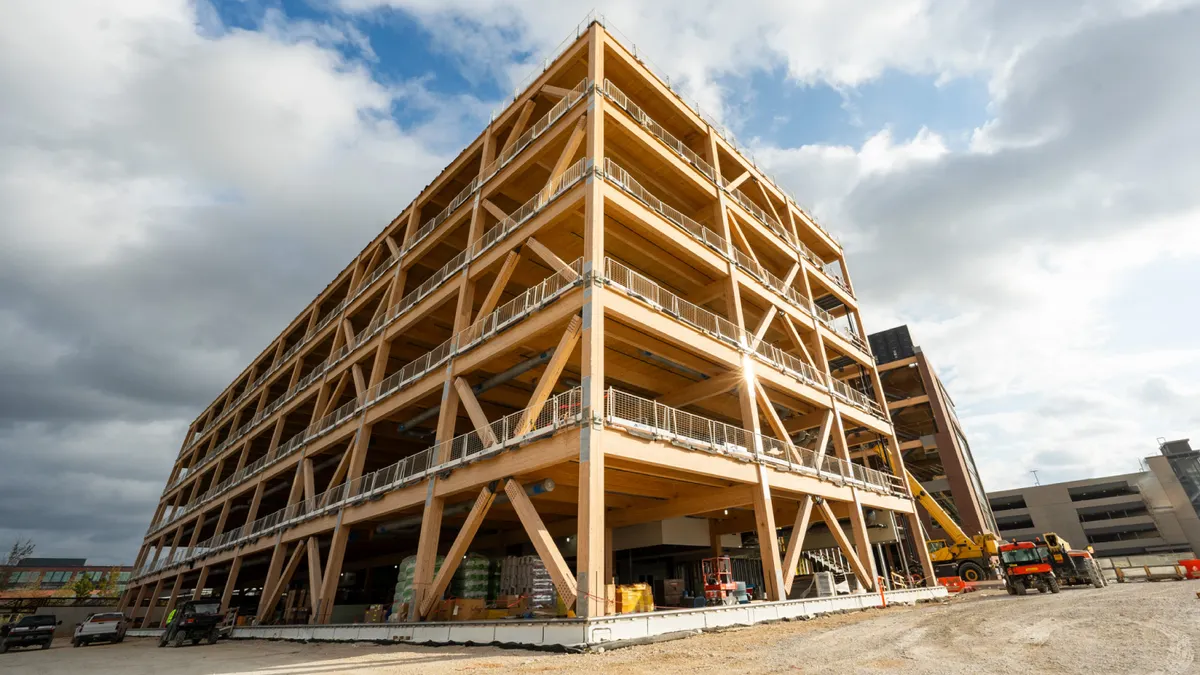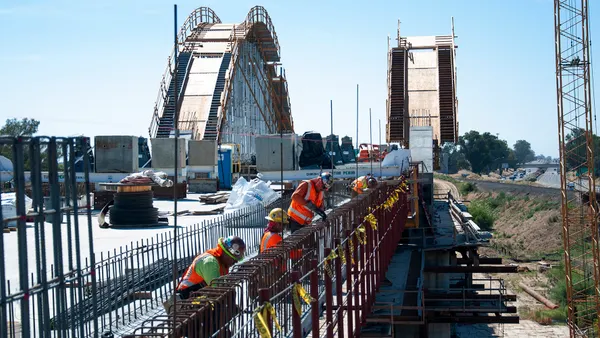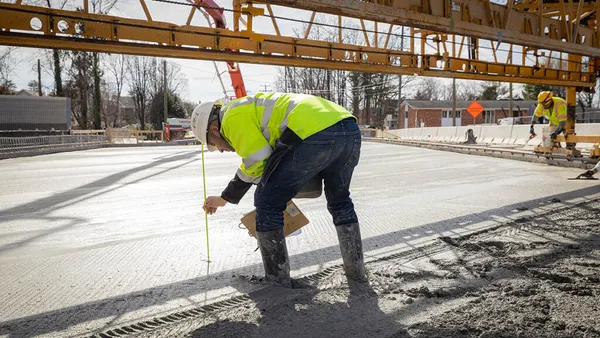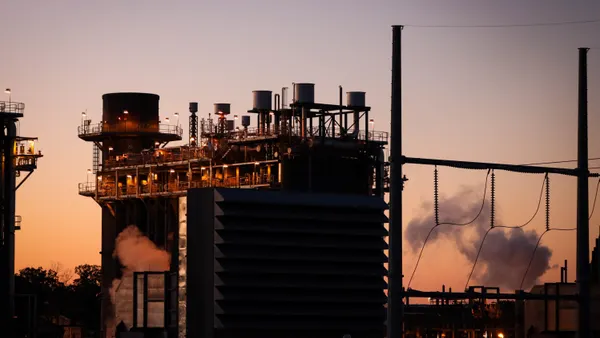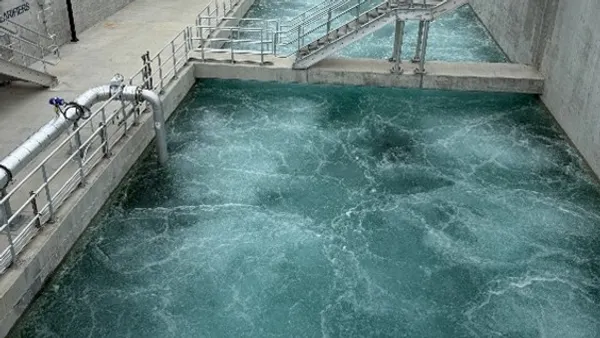Dive Brief:
-
Connecticut Gov. Ned Lamont is crediting the Accelerated Bridge Construction (ABC) method with saving up to two years on the replacement of a bridge section over Interstate 95 in Stamford, Connecticut.
-
O&G Industries, based in Torrington, Connecticut, led the $15 million project, which saw the complete demolition of two spans that carry Route 1 over I-95 and the installation of two new concrete and steel segments, which were built offsite, during the first two weekends of June.
-
Using traditional construction methods, Lamont said the project could have taken two years, created traffic nightmares in one of the state's most heavily congested areas, and have cost much more. The state DOT has also used ABC on two bridge projects in Southington, Connecticut.
Dive Insight:
ABC has become a way for state DOTs to replace aging bridge infrastructure with minimal traffic detours during construction. It is also recognized by many as a safer way to build the bridge structures.
HNTB's Bala Sivakumar told Construction Dive last year that building according to ABC methods keep workers closer to the ground instead of tying rebar or pouring concrete at 50 feet to 100 feet above the flow of traffic.
According to Amanda Bao, associate professor in in the civil engineering technology, environmental management and safety department at Rochester Institute of Technology, construction can also be set up indoors or under shelters that can insulate workers and bridge components from extreme weather. This can help keep the project on schedule because there is no need to extend the contract due to weather delays.
ABC teams must take care, however, to design specifically for that method because, Bao said, that a traditional bridge design cannot be converted to ABC.
Bridge design could be an issue when the National Transportation Safety Board publishes its final decision on the cause of the pedestrian bridge collapse at Florida International University in Miami last year. The bridge, built offsite and then installed on the FIU campus in March of 2018, collapsed, killing several people as traffic flowed underneath during re-tensioning activities. In a preliminary report, the agency indicated that design errors likely played a role.
According to documents revealed during civil court proceedings related to the collapse, representatives of the project engineer, FIGG Bridge Engineers, looked at reports of cracks in the bridge after it was set in place and declared the structure safe. FIGG also allegedly approved traffic flow to continue underneath the bridge during post-installation work. FIGG has disputed these assertions with the NTSB.



